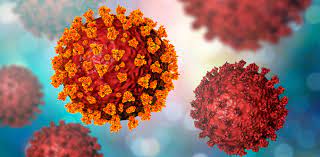Cocaine has long been notorious for its severe consequences, including overdose fatalities and erratic behavior. Now, scientists have uncovered the specific mechanisms within the brain that make this drug so hazardous. Groundbreaking research conducted at the Medical University of South Carolina (MUSC) has revealed how cocaine activates certain brain proteins, which subsequently hijack normal brain circuits, driving increased drug-taking behavior.
The study, published in the prestigious journal Nature Communications, sheds light on the processes behind drug-context associations, which are key contributors to the risk of relapse among individuals with substance use disorders. The research was spearheaded by Dr. Christopher Cowan, Chair of the Department of Neuroscience at MUSC.
Dr. Cowan and his team have identified a critical protein known as neuronal PAS domain protein 4 (NPAS4) that plays a significant role in the formation and maintenance of these drug-context associations. “These drug-context associations become future triggers for drug seeking,” explained Dr. Cowan, emphasizing the importance of understanding how these associations are formed to develop effective interventions.
The researchers focused on a specific group of cells within the nucleus accumbens, a region of the brain that is central to controlling motivation and reward-based learning. Their findings demonstrated an increase in neurons expressing NPAS4 following exposure to cocaine. NPAS4 is a transcription factor that orchestrates cellular responses to neuronal activity triggered by various stimuli, including drugs.
One of the most intriguing aspects of the study is the role of NPAS4 in neurons expressing D2 dopamine receptors, as opposed to D1 receptors. Normally, D2 neurons act as a brake on drug-taking behaviors, but the presence of NPAS4 appears to weaken this inhibitory effect. As a result, drug-context associations are reinforced, significantly increasing the risk of relapse.
“Drugs are presumably doing multiple things,” Dr. Cowan noted. “They’re not only strengthening and forming the context memory but also suppressing the brain’s ability to oppose this association.”
The discovery of NPAS4’s involvement in these processes offers a new avenue for developing therapeutic interventions aimed at reducing the risk of relapse. Targeting NPAS4 could lead to breakthroughs in the treatment of cocaine addiction, potentially saving lives and providing hope for those struggling with substance use disorders.
As scientists continue to unravel the complexities of addiction, this research represents a significant step forward in understanding the biological mechanisms that make cocaine so dangerous, and how we might mitigate its devastating effects.












